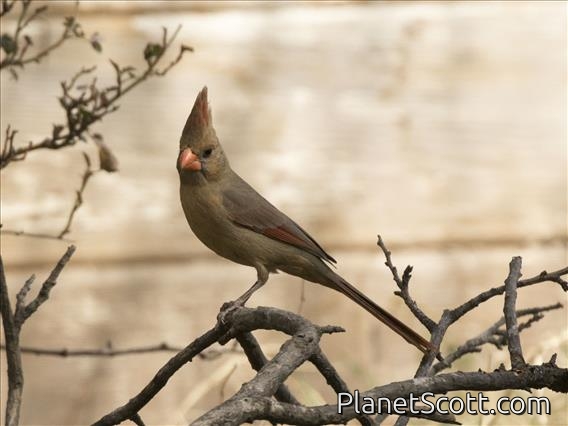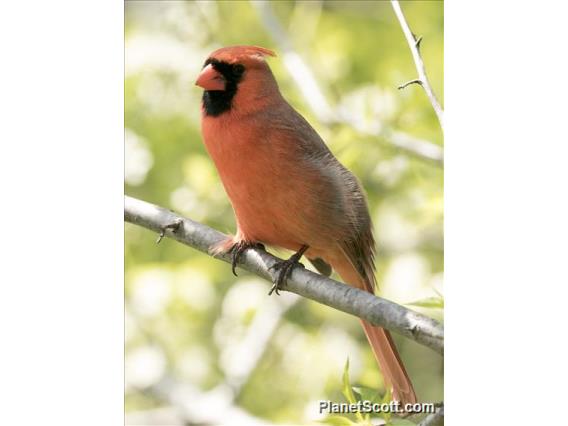Northern Cardinal (Cardinalis cardinalis)

Northern Cardinal (Cardinalis cardinalis) - Female

Northern Cardinal (Cardinalis cardinalis)


×



Northern Cardinal (Cardinalis cardinalis) - Female

Northern Cardinal (Cardinalis cardinalis)
About Northern Cardinal (Cardinalis cardinalis)
- Kingdom: Animals
- Phylum: Chordates
- Class: Birds
- Order: Perching Birds
- Family: Cardinals and Allies
The northern cardinal, also commonly known as the common cardinal, red cardinal, or simply cardinal, is a bird in the genus Cardinalis. It can be found in southeastern Canada, through the eastern United States from Maine to Minnesota to Texas, New Mexico, southern Arizona, southern California and south through Mexico, Belize, and Guatemala. It is also an introduced species in a few locations such as Bermuda and all major islands of Hawaii since its introduction in 1929. Its habitat includes woodlands, gardens, shrublands, and wetlands. It is the state bird of Illinois, Indiana, Kentucky, North Carolina, Ohio, Virginia, and West Virginia.
Source: Wikipedia
Trips
Visits
-
2001-03-09
Ocala National Forest, United States of America -
2001-11-25
Bahia Concepcion, Mexico -
2007-03-08
Big Island - Hawaii Volcanoes National Park, United States of America -
2007-03-11
Big Island - Hilo, United States of America -
2007-06-14
Cape May National Wildlife Refuge - Deleware Bay, United States of America -
2007-07-21
Hawthorne Hill Nature Center, United States of America -
2008-02-24
Cabo Pulmo, Mexico -
2009-01-10
Elgin, United States of America -
2009-05-05
Elgin, United States of America -
2009-05-08
Burnidge Forest Preserve, United States of America -
2010-02-01
Elgin - Bluff Spring Fen, United States of America -
2010-10-30
Miller Meadow Forest Preserve, United States of America -
2011-07-10
Santa Fe River, United States of America -
-
2012-07-08
Elgin, United States of America -
2013-03-04
John Heinz NWR at Tinicum (IBA), United States of America -
2013-03-07
Spring Valley Nature Sanctuary, United States of America -
2013-04-14
Austin, United States of America -
2013-04-15
Balcones Canyonlands NWR--Refuge HQ (Travis Co.), United States of America -
2013-04-16
Aransas NWR (CTC 037) (Aransas Co.), United States of America -
2013-04-17
Matagorda County Birding Nature Center, United States of America -
2013-04-17
Brazoria NWR (UTC 108), United States of America -
2013-04-19
Bolivar Peninsula, United States of America -
2013-04-20
Attwater Prairie Chicken National Wildlife Refuge, United States of America -
2014-05-09
Portal--Big Thicket, United States of America -
-
-
-
-
-
-
-
-
-
-
-
-
-
-
-
-
-
-
-
-
-
-
-
-
-
-
-
-
-
-
-
-
-
-
-
-
-
-
-
-
-







